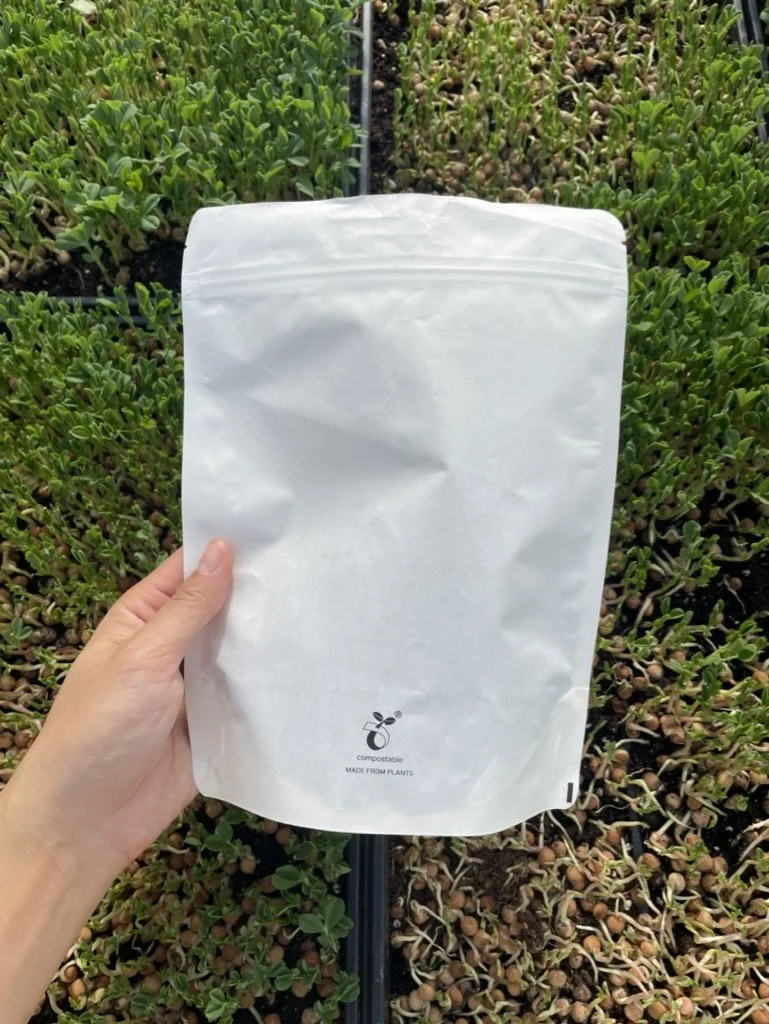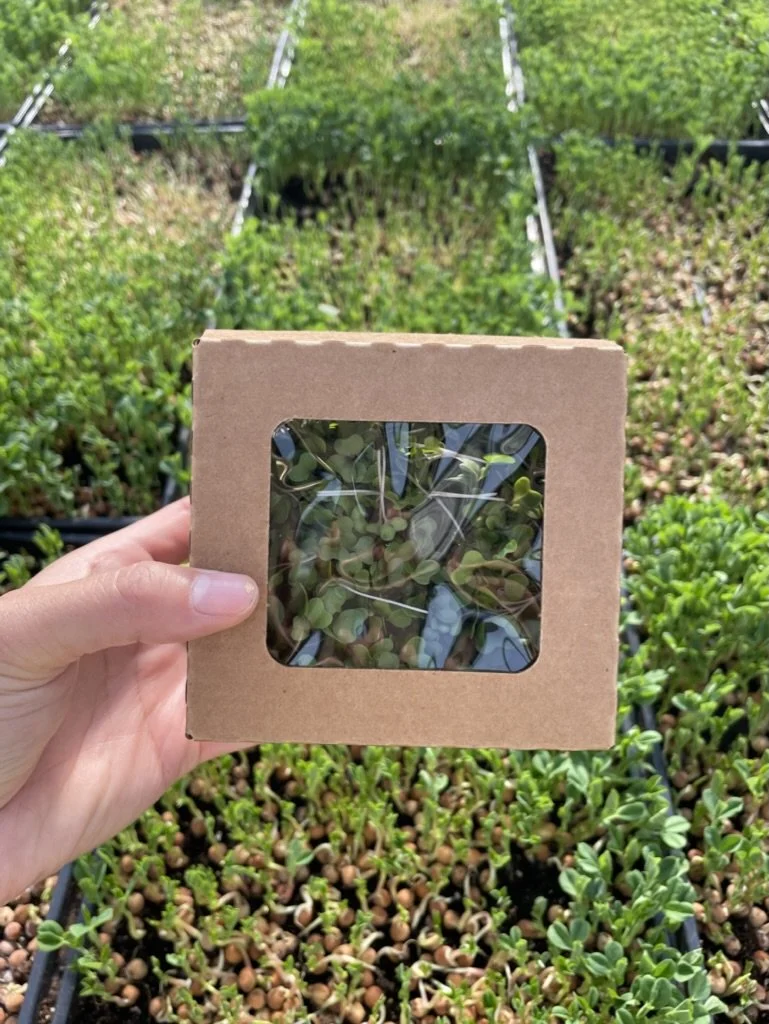
SUSTAINABLE MICROGREENS PACKAGING
Farmers and other food producers rely on packaging to keep produce fresh, safe, and attractive to customers. The most common method is single-use plastic packaging. Every year, Brooklyn Grange uses about 30,000 plastic clamshells to pack microgreens. With grant funding from SARE, Brooklyn Grange’s microgreens team researched sustainable alternatives for our microgreens products.
After connecting with our farming network and considerable research, we chose built the following framework to assess the quality of an alternative packaging product. A “good” product is a balance of few different considerations in the following categories:
METRICS FOR SUCCESS
Would you buy it? Microgreens are almost always prepackaged, not scooped out of a bulk bin. The packaging needs to be transparent or have a (plastic) window for consumers to see the microgreens within. Packaging should also look professional for consumers to trust the quality of the product.
MARKETABILITY
The design of the package must be conducive to easy and fast packing, stacking. It must be able to protect the microgreens during transport and finally, it must be able to preserve their shelf life at least 1 week. Behind the scenes, it’s also important to have a supplier with good customer service, small enough minimum orders, and a workable price.
2. OPERATIONAL VIABILITY
3. ENVIRONMENTAL IMPACT
To assess the sustainability of the product we simplified the many considerations into inputs and disposability. For input, we looked at materials, energy, and water used in manufacturing and pollution from manufacturing, transport, etc. For disposability, we looked at whether or not it was compostable. Composting is typically uses less energy and produces fewer emissions than plastics recycling.
TEST PRODUCTS
1
GOOD NATURED
THE BIOPLASTIC CLAMSHELL
2
BIOTRE
KRAFT PAPER POUCH
3
GROUNDED
BIOPLASTIC POUCH
4
READY CYCLE
CARDBOARD CLAMSHELL
LEAD TEAM
Maya Kutz, Greenhouse Manager
Liz Dowd, Director of Farming Operations
COLLABORATORS
The Meat Hook, Brooklyn, New York (co-testers)










